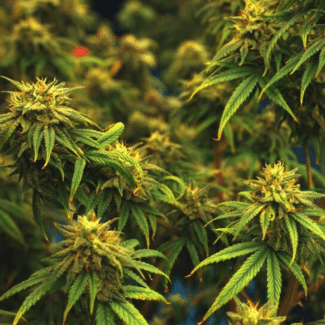California Tax Increase: Navigating Challenges Cannabis Leaders Face
On July 1st, California’s cannabis excise tax increased from 15% to 19%, a move that spells trouble for the state’s struggling cannabis industry. The post delves into the economic realities of this tax increase, its broader impact on consumer behavior and innovation, and actionable strategies that founders can implement to navigate this challenging new environment. Let’s dive in.

On July 1, the state of California increased its excise tax on the cannabis industry, raising taxes from 15% to 19%. This is a disappointing development for the largest cannabis industry in the country, and yet another blow to the struggling cannabis industry. Here’s what the California tax increase means for cannabis businesses in the state.
Understanding the California Cannabis Tax Landscape
Understanding the California cannabis tax landscape requires careful consideration of the state’s complex and multi-layered tax structure. This intricate system, which includes cultivation, excise, and sales taxes, significantly impacts the financial viability and operational strategies of businesses within the state’s legal cannabis market.
A Brief History of Cannabis Taxation
When California legalized recreational cannabis through Proposition 64, the taxes levied were meant to help support funding community social programs and pay for the increased regulation of the state government. Originally, California had a two-fold tax system: 15% excise tax on retail sales and a flat rate tax on cultivators: $9.25 per ounce. However, the cultivation tax was wildly unpopular, and farmers across the state blamed the tax for massive losses.
The cultivation tax was eliminated in 2022, and to keep revenue consistent, the state made two changes: retailers were solely responsible for collecting and remitting the excise tax, and the tax was based on gross receipts.
The excise tax is adjustable, but the proposed increase to 19% has been in the works for many months. There were multiple opportunities to cancel the increase that never came to fruition, and on July 1, the tax rate increased.
There is still an opportunity for this rate to be lowered, through State Assembly Member Matt Haney’s Assembly Bill 564, but whether or not this will pass and the rate lowered retroactively is up in the air.
The Economic Reality for Licensed Businesses
This California tax increase spells trouble for cannabis retailers, who already face heavy taxation rates at the local level and with state sales tax. In some areas of the state, customers may be asked to pay nearly 45% in taxes, nearly doubling the price of cannabis products. Annual cannabis sales in California have been trending downward for a few years, and this increase in taxes is not likely to attract new customers; if anything, it will bolster the tax-free illicit market.
This new tax increase means retailers need to attract more customers every month, just to maintain their baseline revenue—up to 200 more customers a month. Combine this with the lower per-customer spend and the razor-thin margins most businesses in the cannabis industry are already operating at, and you’ve got a recipe for disaster.
The Looming Impact: Beyond the Bottom Line
The impact of cannabis taxation extend far beyond simple revenue generation. This section explores how tax policy influences consumer behavior, the illicit market, and public health, while also examining its role in funding critical social equity and community reinvestment initiatives.
Financial Strain & Sustainability
The biggest and most immediate impact of the tax increase is the increase in operating costs for customers and lower profit margins for businesses. Over time, this increase will create a revenue erosion, where retailers will require significantly more customers simply to maintain their existing revenue level in an increasingly competitive market.
The increase also compounds existing cash flow problems for businesses, particularly those in early stages of startup, that require every dollar possible for growth and operations. The harsh reality is that it’s never been easy to operate in California, and some businesses simply won’t survive this additional burden.
Fueling the Illicit Market
This tax increase also fuels the illicit market, creating a large price disparity between legal and unregulated businesses. When customers are asked to spend more for the same products, why wouldn’t they turn to a cheaper, albeit unregulated, market?
The fact that illicit products are not tested or regulated becomes secondary to the cost savings, which creates potential health risks for cannabis consumers. The more customers who turn to the illicit market, the less tax revenue the state brings in—opposite of the goal of this increase.
Impact on Fundraising & Investor Confidence
The California cannabis market has been struggling for years, and this additional tax burden does nothing to sway investors back to the state, and certainly, investors will have hard questions for any cannabis business operating within California.
With less investor money coming in, there are fewer businesses that can get started, particularly with the banking challenges cannabis businesses already face.
Ultimately, this tax increase will hurt innovation in the California cannabis market. When every dollar made must be allocated to operations, there is nothing left for research, development, or market expansion.
Regulatory Uncertainty
Whether or not this tax increase will stick is uncertain. Assembly Member Matt Haney’s bill has been mainly discussed in efforts to stop the increase before it happens. But now that it has taken place, it remains to be seen whether this bill will pass or stall once the legislature convenes. Would the state revert to 15% or simply freeze any additional increases in excise tax?
Start protecting your cannabis business
4 Actionable Strategies for Founders
Here are four things you can do, right now, in response to the tax increase.
Financial Fortification & Analysis
19% tax hits right in the wallet—but do you know how, exactly, this will impact you? Financial modeling can help you understand where and how this tax increase will affect your business.
After you know, it’s time to find ways to save money. Conduct a cost optimization for your business to identify areas with non-essential costs that can be cut without compromising quality or your core operations. A price strategy review can also be helpful; while price adjustments are not necessarily fun, lowering customer costs where possible puts you in a competitive position to retain business.
→ Actionable Tip: Work with your financial advisor to stress-test your business model against the tax hike.
Operational Efficiency & Customer Retention
Lowering operations costs and retaining customers are two of the best strategies for retailers trying to maximize profitability. Retaining customers is far more cost-effective than gaining new ones; a focus on loyalty programs and exceptional customer service goes a long way.
To reduce operational costs, your supply chain needs to be efficient. Review your vendors and partners; where can you negotiate to lower costs, or explore new sourcing options that cost less?
You also need to have a firm grip on your inventory. Lean inventory practices reduce carrying costs and keep you from tying up capital in large stores of products.
→ Actionable tip: Review your data analytics to get a better understanding of how your inventory is moving and your most profitable customer segments, and tailor your marketing accordingly.
Advocacy & Engagement
Advocacy is an important part of any cannabis founder’s responsibilities. Given the stasis of cannabis at the federal level and unpredictable regulatory changes on the state level, business owners need to stay informed on legislative developments, like AB 564, to know what’s coming down the pipeline. It’s also important to make your voice heard: write to local representatives and the Governor’s office to share how developing regulations will affect your business and join state and national advocacy organizations like California NORML and the California Cannabis Industry Association.
→ Actionable tip: Speak up! Don’t underestimate the power of the people when they band together; your voice matters, and your government entities exist to listen to you—even if it doesn’t always feel like it.
Diversification & Innovation (Longer-Term Vision)
Ultimately, this tax increase makes it challenging for cannabis businesses to find profitability in California. Long-term success will come from diversification and innovation for the businesses that are bold enough to try new things.
This may include exploring new product categories with different tax structures or products without THC. It may mean a business needs to pivot to serve a niche market that is currently underserved, and come up with ideas for unique and memorable customer experiences or delivery modules.
Brands should also lean into customer loyalty to keep regulars coming back for more, rather than shopping around. A strong brand can command a premium price, even with higher taxes, as long as customers feel they are getting their money’s worth. What does that look like in practice? Only you can say.
→ Actionable tip: Examine your current customer loyalty program and identify one way it could be stronger.
The California tax increase is yet another challenge the cannabis industry will have to overcome. While this space is filled with resilient and adaptable entrepreneurs, it’s frustrating to see regression in the largest market in the country, and yet another reason why protecting your cannabis business is so important.
Protecting your cannabis company can seem confusing; however, we’re a full-service insurance brokerage working with carriers worldwide to offer you the best coverage possible. We’re here to help! Please reach out to us today by email [email protected] or calling 646-854-1093 for a customized letter or learning more about your cannabis insurance options.



